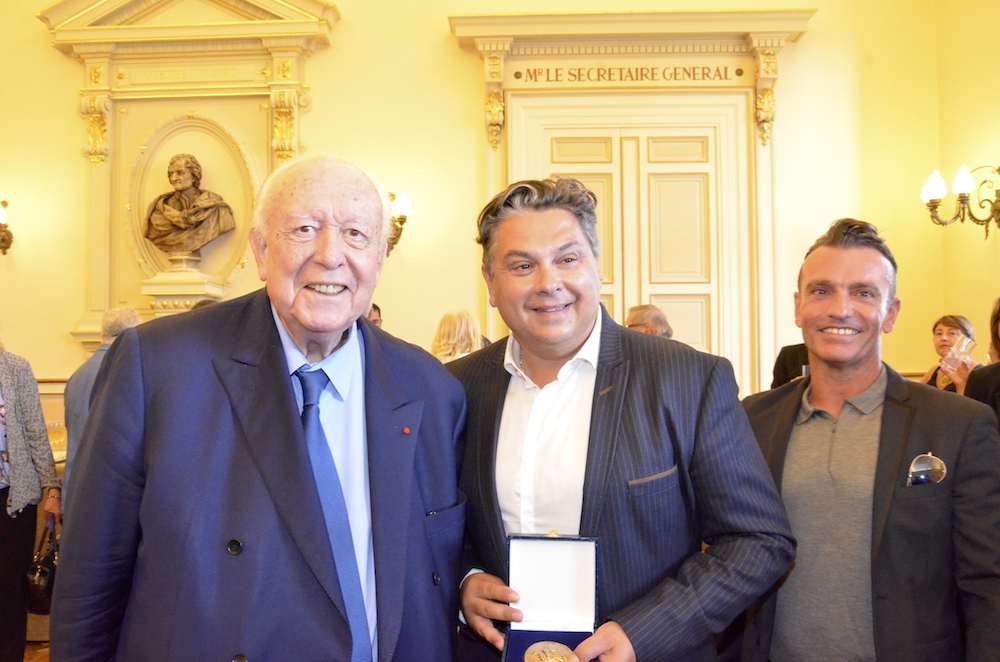Has Virtue Signalling Destroyed Architectural Integrity? An Interview

Table of Contents
Are soaring skyscrapers and eco-friendly designs masking a deeper issue within modern architecture? Is the pursuit of virtue signaling – publicly demonstrating moral values – compromising the core principles of architectural integrity? This article delves into this complex question through an interview with renowned architect Anya Petrova, exploring the tension between social responsibility and design excellence in contemporary building practices. We’ll examine how virtue signaling in architecture might impact structural soundness, aesthetic appeal, and historical preservation, ultimately questioning whether the pursuit of social good is overshadowing the enduring principles of architectural design.
The Rise of "Virtue Signaling" in Architecture
Virtue signaling, in the context of architecture, refers to the incorporation of design elements primarily to showcase ethical or social values rather than for reasons of structural soundness, aesthetic merit, or functional efficiency. This trend manifests in various ways, often blurring the line between genuine commitment to sustainability and a superficial display of social responsibility.
Examples of virtue signaling in architecture include:
- Overemphasis on LEED certification without considering holistic design: While LEED certification aims for environmentally responsible buildings, an overreliance on achieving the certification can lead to design compromises that prioritize points over holistic design excellence.
- Use of specific materials for symbolic reasons (e.g., reclaimed wood) regardless of cost or practicality: Employing reclaimed wood, for instance, might signal a commitment to sustainability but could prove more expensive and less structurally sound than other options.
- Prioritizing visually striking, but ultimately inefficient, design elements to convey a message: Certain design choices, although visually impactful, might lack energy efficiency or practical functionality, prioritizing symbolic representation over overall performance. For instance, a building designed with expansive glass facades to showcase transparency might ultimately require significant energy expenditure for climate control.
Compromises to Architectural Integrity
The pursuit of virtue signaling can lead to significant compromises in architectural integrity across various aspects of design and construction:
- Structural Integrity: Prioritizing energy efficiency, for instance, through the use of lightweight materials, could compromise the building’s structural strength and long-term stability.
- Aesthetics: Overtly symbolic design elements, often chosen to convey a specific message, can detract from the overall aesthetic appeal of a building. The resultant designs may lack coherence, harmony, and visual balance.
- Historical Preservation: Renovations prioritizing symbolic changes over the preservation of historical features might irrevocably damage the architectural heritage of a significant building. The alteration or destruction of historical details to project a specific image can be a form of cultural vandalism.
Examples of these compromises include buildings with insufficient insulation leading to high energy bills despite their "green" facade, or historical landmarks altered beyond recognition in the name of "modernizing" their image. These choices raise ethical questions about the responsibility of architects to balance social messaging with preserving the fundamental principles of design and construction.
Balancing Social Responsibility and Design Excellence
The challenge lies in finding a harmonious balance between addressing social concerns and upholding the highest standards of architectural integrity. It's crucial for architects to find ways to integrate social responsibility into their work without compromising design excellence. This can be achieved by:
- Prioritizing holistic design: Design choices should consider structural integrity, aesthetics, functionality, and sustainability in an integrated manner.
- Employing innovative sustainable practices: There are countless ways to promote sustainable building practices without sacrificing aesthetics or functionality—e.g., bioclimatic design, passive solar heating, and the use of locally-sourced, durable materials.
- Incorporating inclusive design principles thoughtfully: Accessibility and inclusivity should be woven seamlessly into the design, not added as an afterthought that detracts from the overall architectural concept.
The Interview with Anya Petrova
Anya Petrova, a leading architect known for her commitment to sustainable and socially conscious design, shared her insights: "Virtue signaling in architecture is a double-edged sword," she stated. "While it raises awareness about critical issues, it can lead to superficial solutions that ultimately fail to deliver on their promises. The key is to prioritize thoughtful, well-researched design choices that are both aesthetically pleasing and functionally sound." Petrova emphasized the importance of rigorous material analysis and a holistic design process that goes beyond superficial displays of virtue signaling. She stressed the importance of responsible sourcing of materials and the need for transparency in all aspects of building. Her advice to aspiring architects? “Always prioritize integrity over fleeting trends. Strive for solutions that address societal issues in a genuine and sustainable way, without compromising the fundamental principles of excellent design.”
Conclusion
The question of whether virtue signaling has damaged architectural integrity remains complex. While the intention behind many socially conscious design choices is admirable, the execution often falls short, compromising structural soundness, aesthetic appeal, and even historical preservation in some cases. Anya Petrova’s interview highlights the need for a more nuanced approach, prioritizing holistic design that seamlessly integrates social responsibility without sacrificing excellence. Let's continue this discussion: how can we ensure that our commitment to social responsibility in architecture does not compromise the enduring principles of design excellence? Share your thoughts and experiences – let's build a future of responsible and ethical design practices together. How can we move beyond virtue signaling architecture to create truly sustainable and impactful buildings?

Featured Posts
-
 Ray Epps Sues Fox News For Defamation January 6th Allegations At The Center
May 25, 2025
Ray Epps Sues Fox News For Defamation January 6th Allegations At The Center
May 25, 2025 -
 Der Hsv Und Der Aufstieg Die 2 Bundesliga Saison Im Kontext Von Hafengeburtstag Und Konzert
May 25, 2025
Der Hsv Und Der Aufstieg Die 2 Bundesliga Saison Im Kontext Von Hafengeburtstag Und Konzert
May 25, 2025 -
 Tourist Destination Rebuts Safety Claims After Recent Shooting Incident
May 25, 2025
Tourist Destination Rebuts Safety Claims After Recent Shooting Incident
May 25, 2025 -
 Dazi Ue Le Borse Crollano La Ue Promette Una Risposta Decisa
May 25, 2025
Dazi Ue Le Borse Crollano La Ue Promette Una Risposta Decisa
May 25, 2025 -
 Zize Humoriste Transformiste Spectacle 100 Marseillais A Graveson Le 4 Avril
May 25, 2025
Zize Humoriste Transformiste Spectacle 100 Marseillais A Graveson Le 4 Avril
May 25, 2025
Latest Posts
-
 Herzliyas Salon Yevani A Restaurant Review By The Jerusalem Post
May 26, 2025
Herzliyas Salon Yevani A Restaurant Review By The Jerusalem Post
May 26, 2025 -
 Ahtjajat Mtwaslt Fy Tl Abyb Llmtalbt Balifraj En Alasra
May 26, 2025
Ahtjajat Mtwaslt Fy Tl Abyb Llmtalbt Balifraj En Alasra
May 26, 2025 -
 Captive Idf Soldiers A Look At Their Personal Stories From Gaza
May 26, 2025
Captive Idf Soldiers A Look At Their Personal Stories From Gaza
May 26, 2025 -
 Pressure Mounts Ex Israeli Female Soldiers Demand Gaza Prisoner Freedom
May 26, 2025
Pressure Mounts Ex Israeli Female Soldiers Demand Gaza Prisoner Freedom
May 26, 2025 -
 New Photo Shows Injuries On Kidnapped Idf Soldier Matan Angrest
May 26, 2025
New Photo Shows Injuries On Kidnapped Idf Soldier Matan Angrest
May 26, 2025
